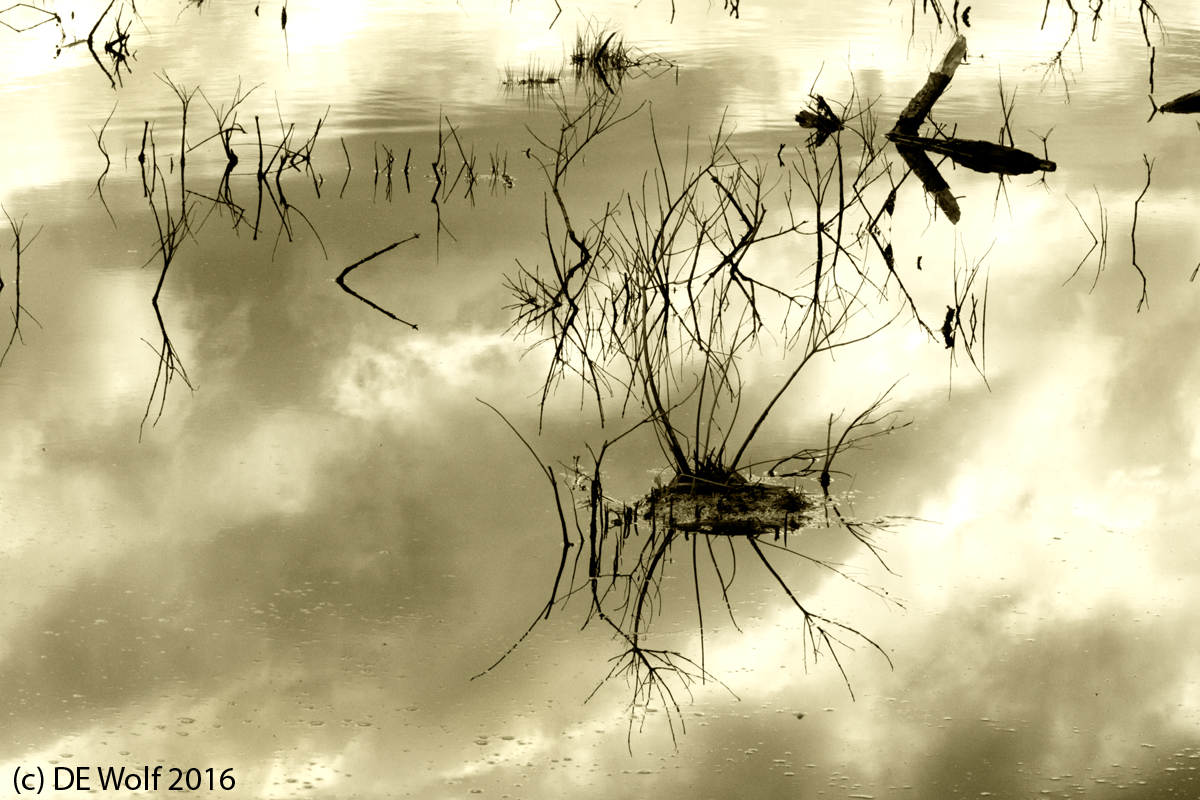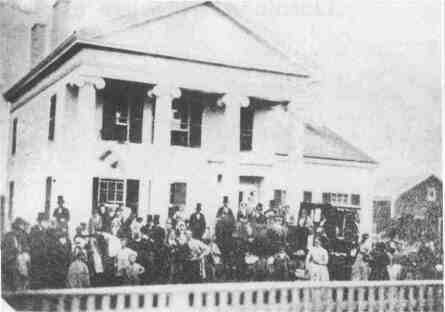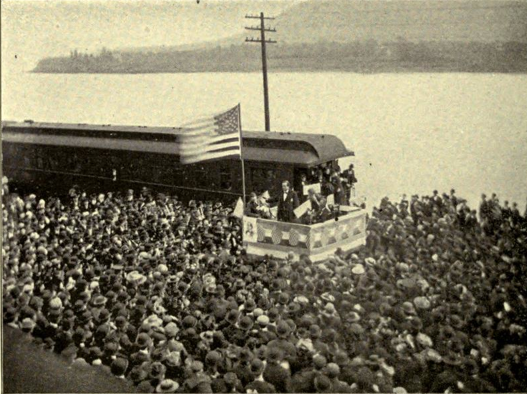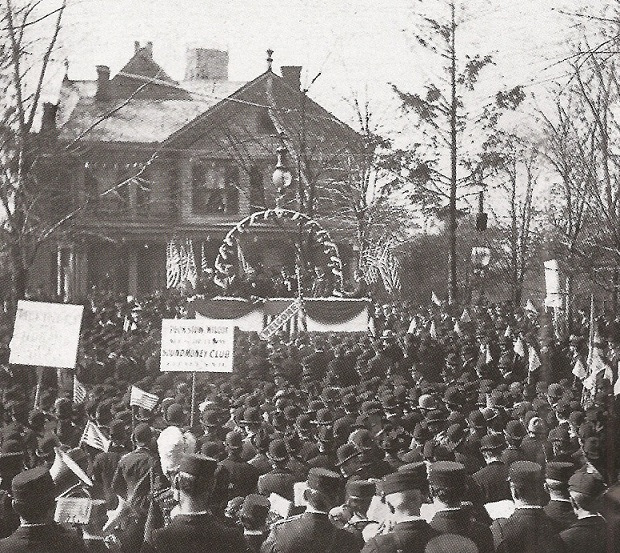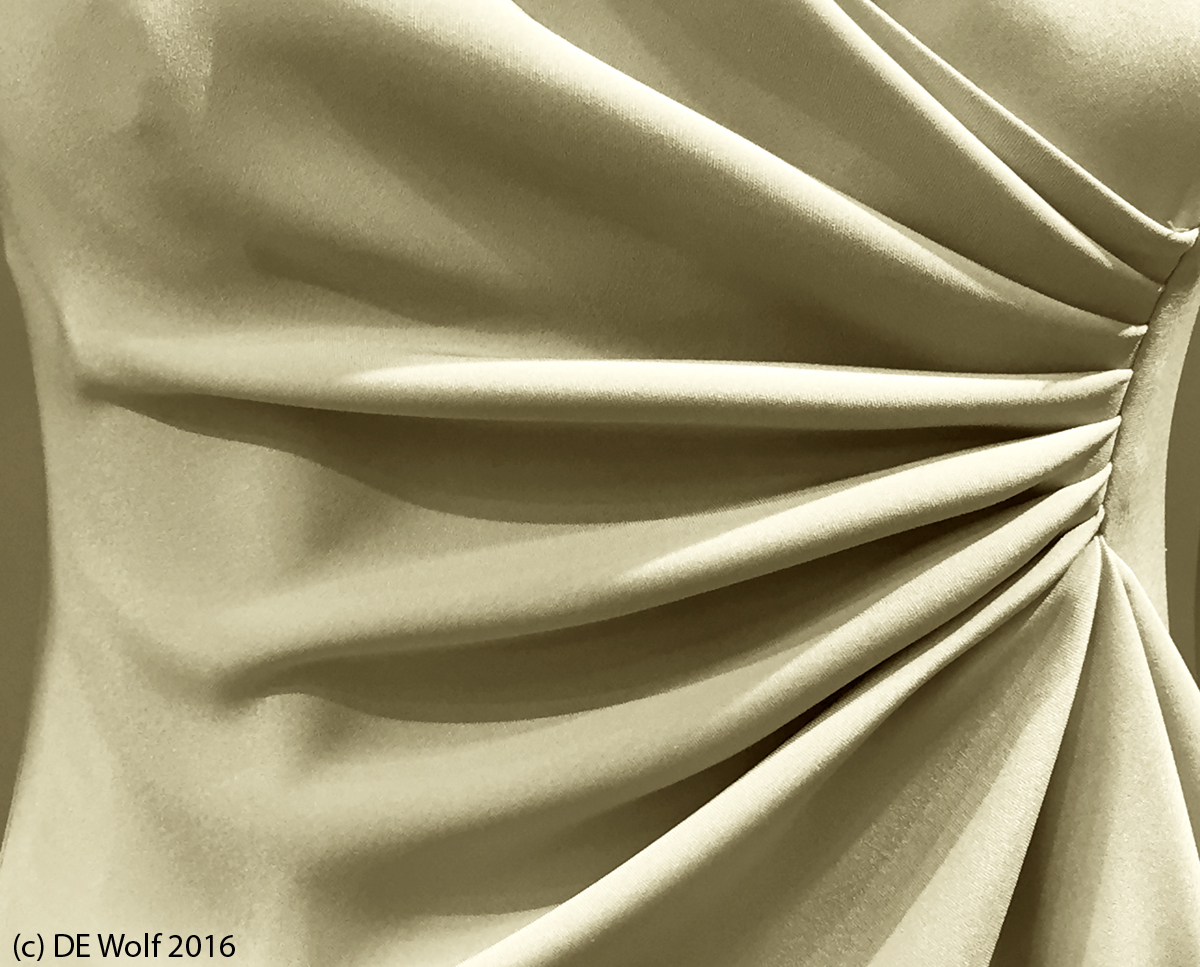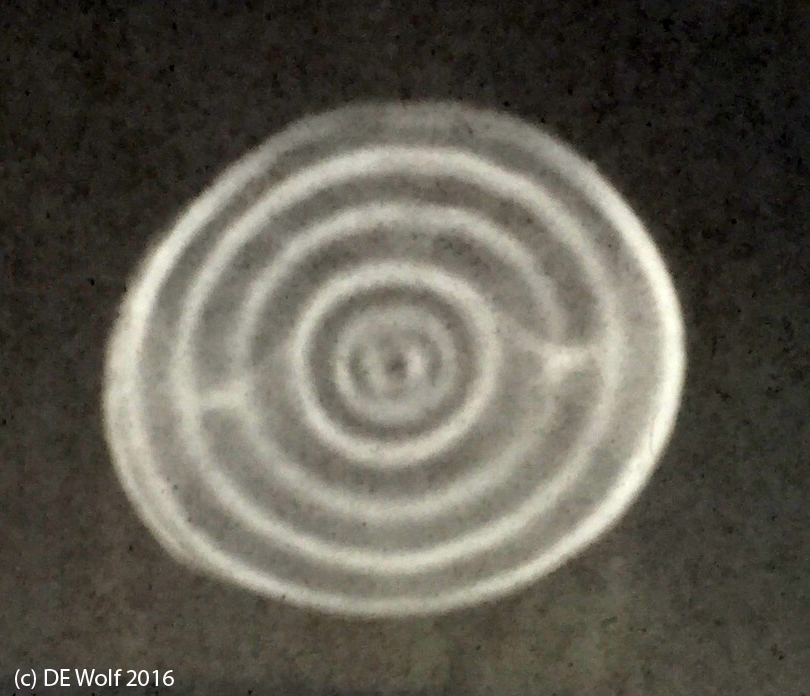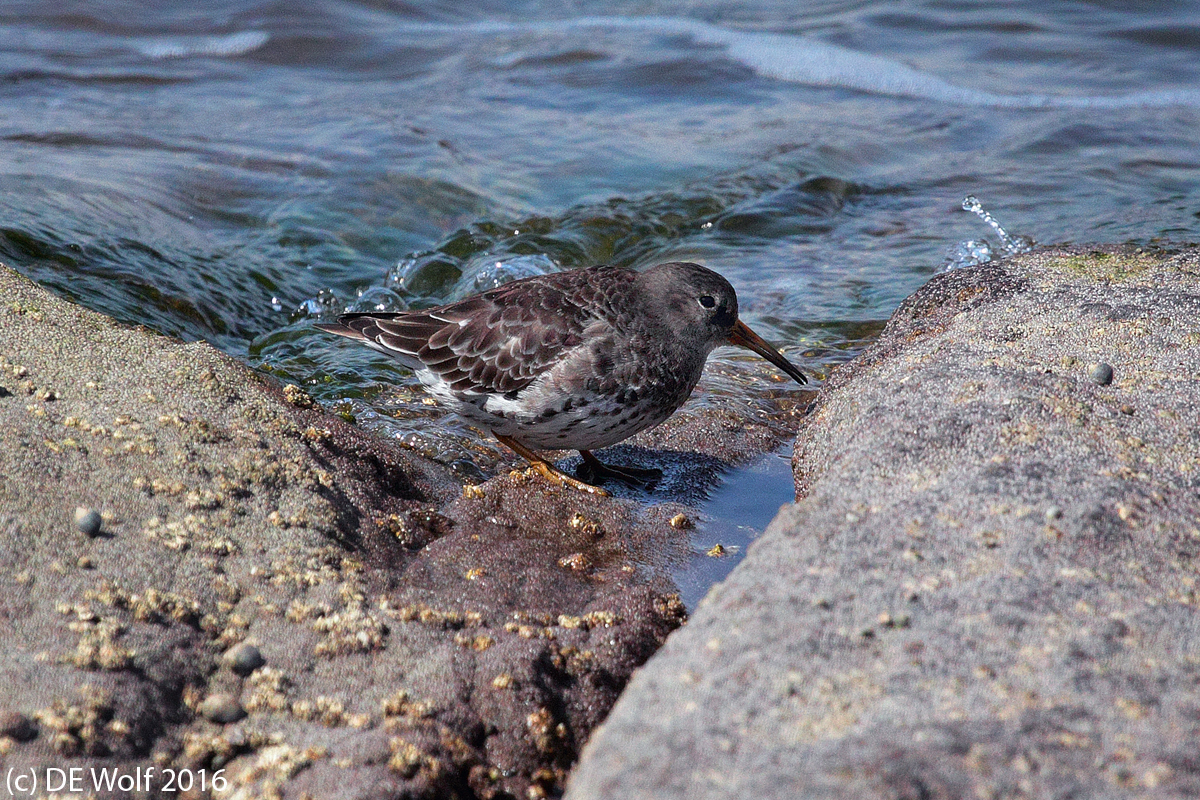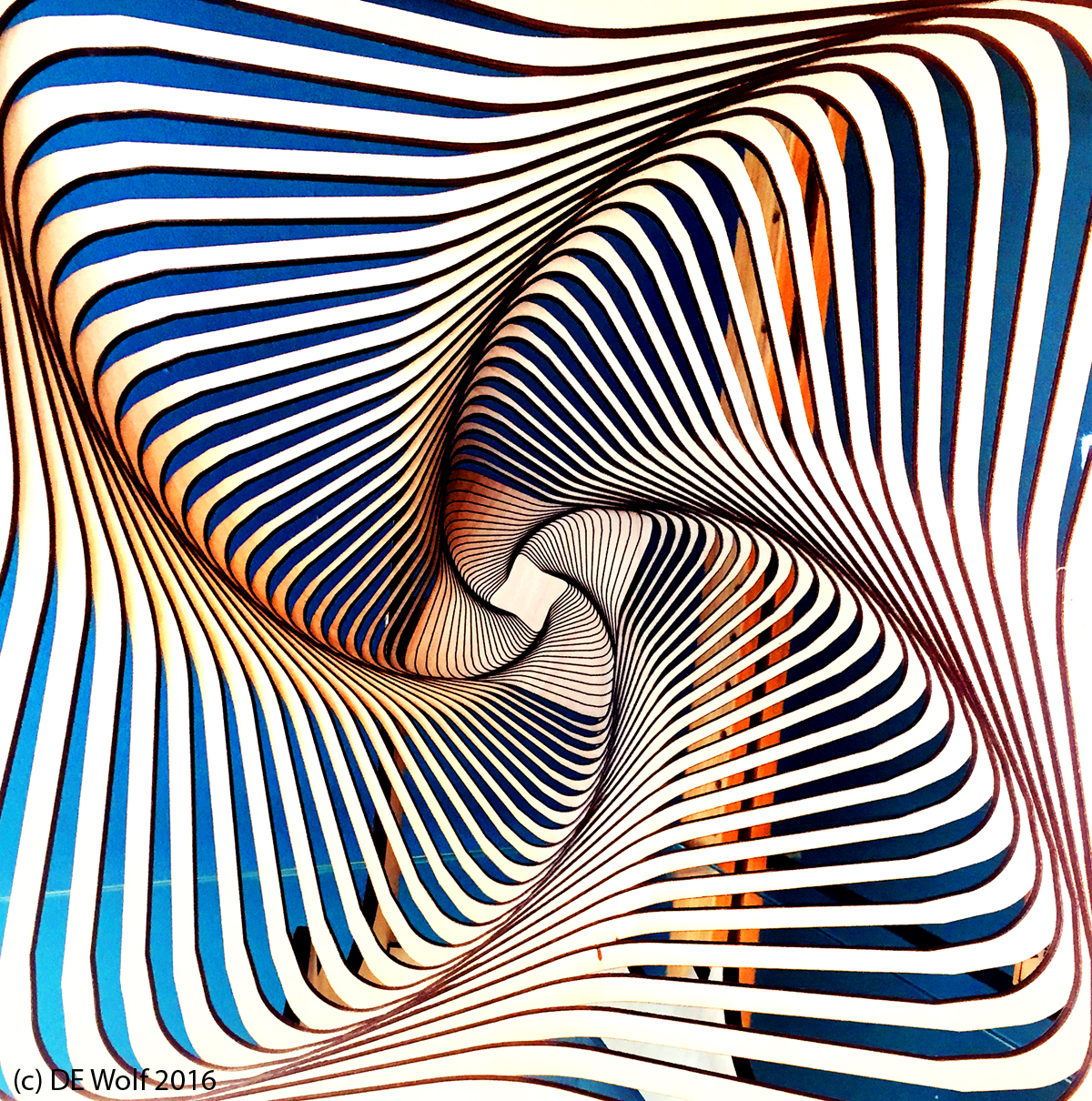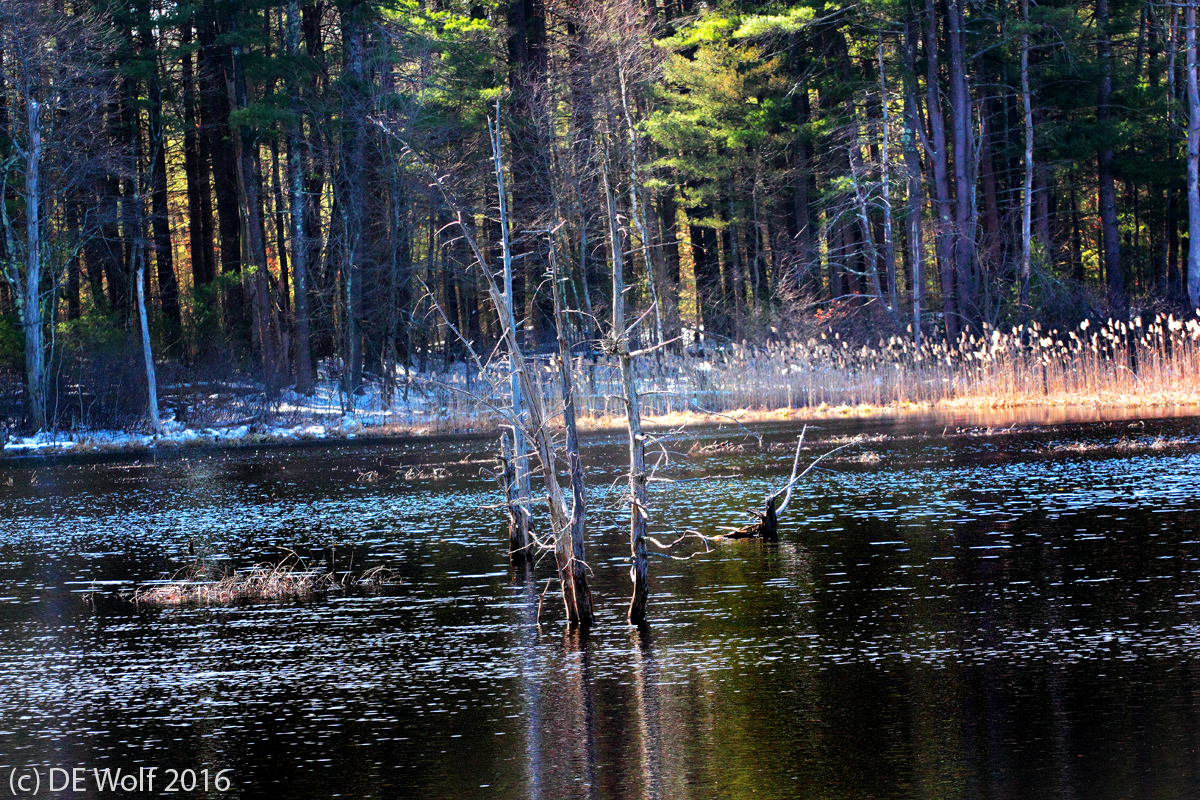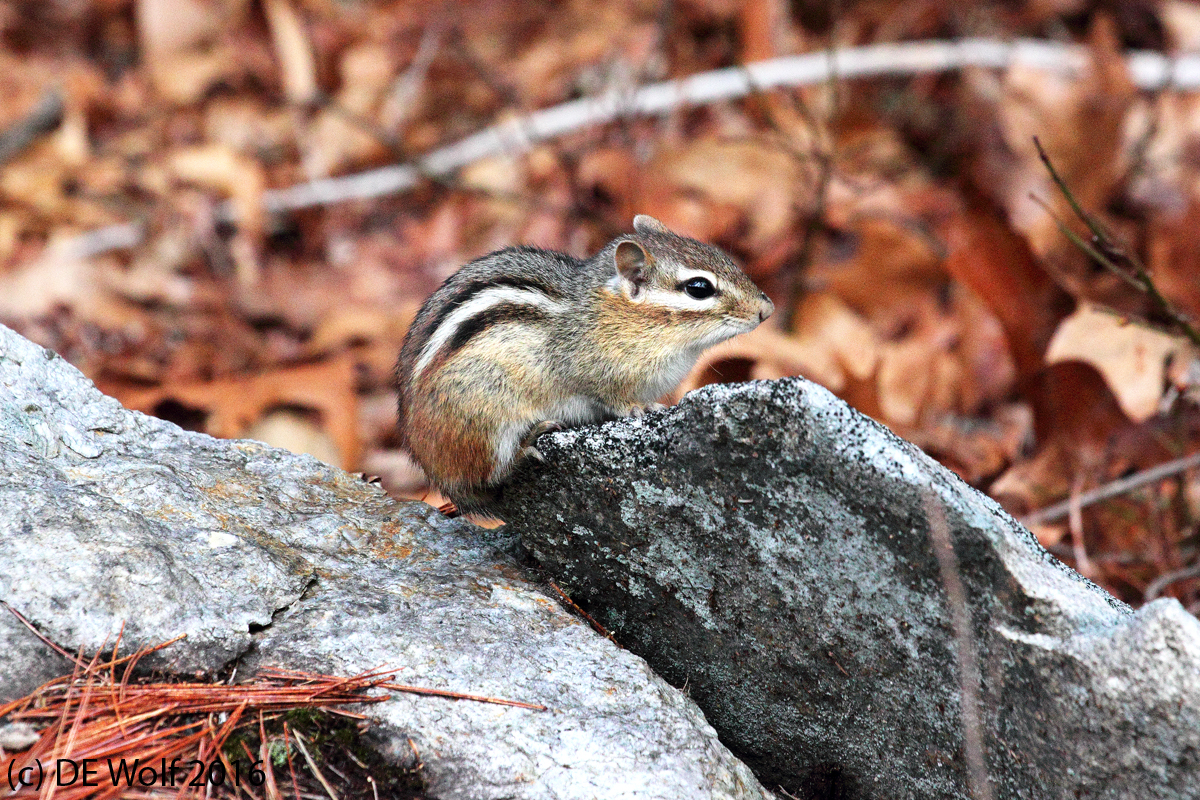
Figure 1 – Eastern chipmunk – Tamias striatus. Assabet River Wildlife Refuge, Sudbury, MA. (c) DE Wolf 2016.
All of a sudden our early spring has taken a step back. We have had two early April snowfalls. However, the snow was gone before we really had time to admire it. Such is the way of spring snow. The changing weather has been all the more reason to venture out into the forest, and I have been regularly visiting the Assabet River Wildlife Refuge. I have to say how much I love this place. It is the quintessential wetland. And I keep thinking how much my father would have liked it. Everywhere are tall pine trees, and everywhere trees have broken off and crashed to the forest floor. The park rangers wage a constant war against debris and dangerous overhanging limbs.
The other day I was walking up the road to my favorite entry point when I spotted the little Eastern chipmunk of Figure1 playing hide and seek with me along the stone wall. Despite the abundance of the chipmunks – as if that made them less than worthy photographic game – I decided to photograph him anyway in this very natural setting and I liked the colors of the dried foliage behind him and the red-brown pine needles in the foreground. Then down by the water I found the foreboding scene of Figure 2 showing looming storm clouds reflected in the pond, where tufts of marsh grass and twigs broke the surface. The face of the pond changes continuously. You have only to look.
A short-while later I was deep among the pines when it started to hail. It was a cold and wet reminder of winter and accentuated the raw beauty of the forest.

